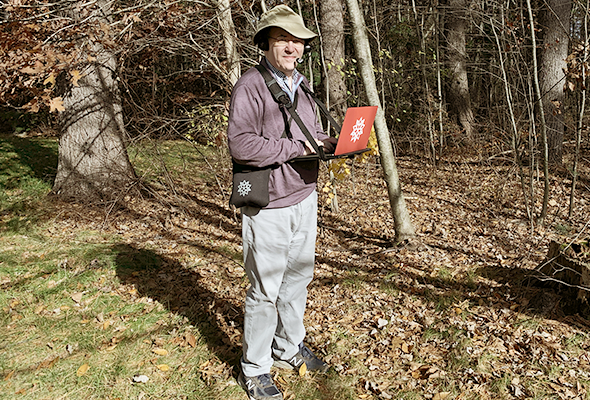Stephen Wolfram Finds Working Outside Lowers His Resting Heart Rate
Steven Jonas
May 1, 2019
We previously interviewed Stephen Wolfram of the eponymously named Wolfram Research in 2012 when he released a long piece about his extensive self-tracking. He recently posted a detailed description of what he describes as his “personal productivity infrastructure”. In it, he describes a discovery that changed his morning routine.
Wolfram uses a treadmill desk to help him reach a daily goal of walking two hours in the morning. At some point, he noticed that where he walked seemed to be an important variable:
Early last summer I noticed that for a couple of weeks my resting heart rate had noticeably gone down. At first I thought it was just because I happened to be systematically doing something I liked then. But later in the summer, it happened again. And then I realized: those were times when I wasn’t walking inside on a treadmill; instead (for different reasons) I was walking outside. For many years my wife had been extolling the virtues of spending time outside. But it had never really seemed practical for me
In our “Get Started” guide, we noted the value of a “one number baseline” for generating hypotheses and testing the impact of interventions. Discoveries can be made by tracking something over a long period of the time and noting significant variances. In Wolfram’s case, after seeing that his resting heart rate went down, he crafted a couple of theories for why that happened, but didn’t actively test them. However, the theory crafting was important so that the next time he observed the drop in resting heart rate happened again, it gave strength to one hypothesis over another.
This is typical for how discoveries are made in everyday science. It is often impractical to devise an experiment that definitively tests the validity of a theory. Rather, the theory’s strength is built or lost over time through continued observation. By continuing to walk outside and track resting heart rate, one can evaluate how well the theory holds up over time.
In Wolfram’s case, his discovery was a moot point unless he found a way to bring his computer with him on these multi-hour walks. Inspiration came from an odd place: a robotic dog at a tech event.
[W]hat really interested me was the person … intently controlling the dog—using a laptop that he had strapped on in front of him as if he were selling popcorn. Could one actually work like this, typing and everything? After my “heart-rate discovery” I decided I had to try it. I thought I’d have to build something myself, but actually one can just buy “walking desks”, and so I did. And after minor modifications, I discovered that I could walk and type perfectly well with it, even for a couple of hours. I was embarrassed I hadn’t figured out such a simple solution 20 years ago. But starting last fall—whenever the weather’s been good—I’ve tried to spend a couple of hours of each day walking outside like this:

Although Wolfram is not going to get any style points, his physiology doesn’t seem to care. As Wolfram reports, so far, his lower resting heart rate has persisted since walking outdoors more often.
You can read Wolfram’s entire post here.


